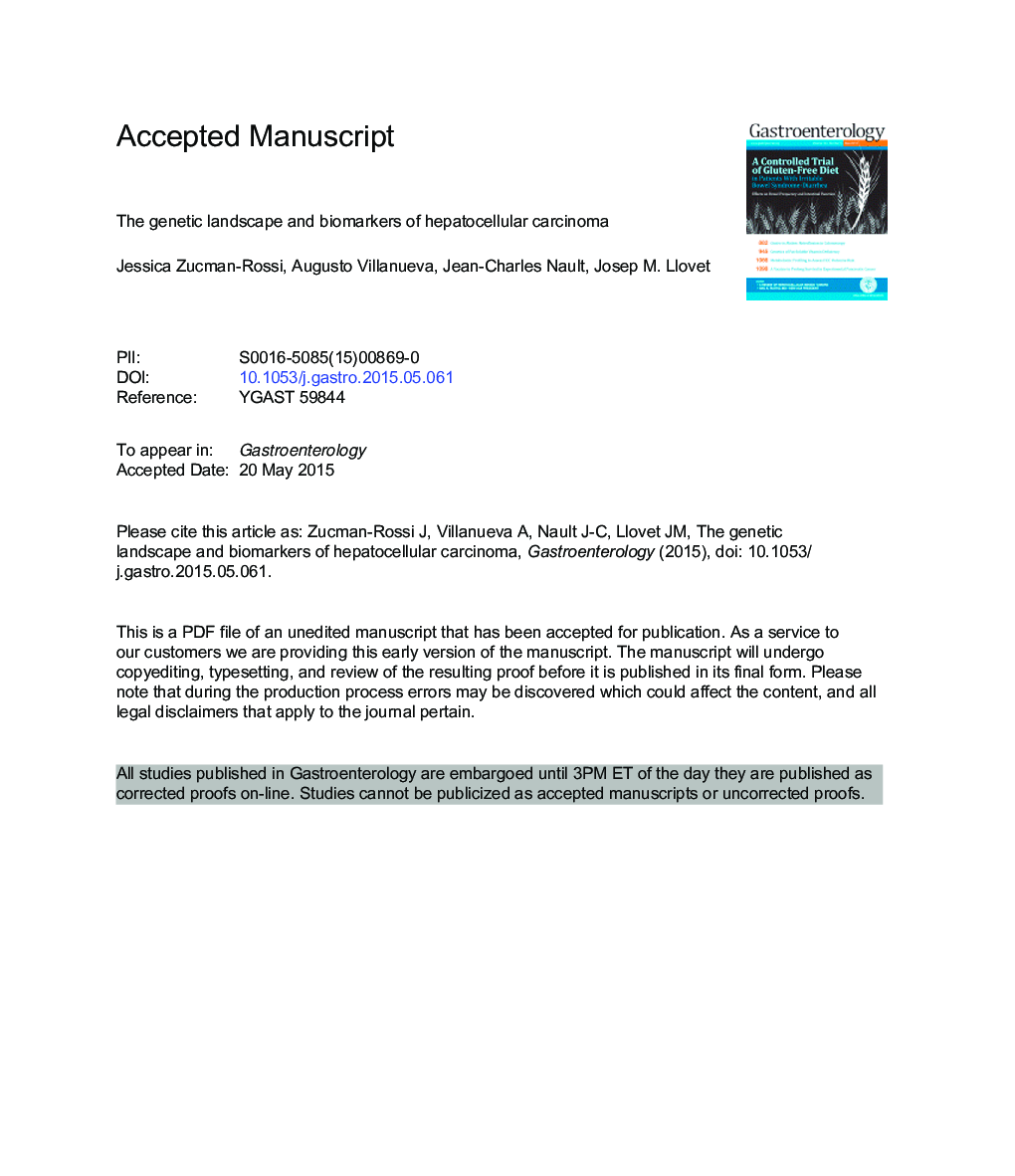| Article ID | Journal | Published Year | Pages | File Type |
|---|---|---|---|---|
| 6092789 | Gastroenterology | 2015 | 25 Pages |
Abstract
Hepatocellular carcinoma (HCC) has emerged as a major cause of cancer-related death. Its mortality has increased in Western populations, with a minority of patients diagnosed at early stages, when curative treatments are feasible. Only the multikinase inhibitor sorafenib is available for the management of advanced cases. During the last 10 years, there has been a clear delineation of the landscape of genetic alterations in HCC, including high-level DNA amplifications in chromosome 6p21 (VEGFA) and 11q13 (FGF19/CNND1), as well as homozygous deletions in chromosome 9 (CDKN2A). The most frequent mutations affect TERT promoter (60%), associated with an increased telomerase expression. TERT promoter can also be affected by copy number variations and hepatitis B DNA insertions, and it can be found mutated in preneoplastic lesions. TP53 and CTNNB1 are the next most prevalent mutations, affecting 25%â30% of HCC patients, that, in addition to low-frequency mutated genes (eg, AXIN1, ARID2, ARID1A, TSC1/TSC2, RPS6KA3, KEAP1, MLL2), help define some of the core deregulated pathways in HCC. Conceptually, some of these changes behave as prototypic oncogenic addiction loops, being ideal biomarkers for specific therapeutic approaches. Data from genomic profiling enabled a proposal of HCC in 2 major molecular clusters (proliferation and nonproliferation), with differential enrichment in prognostic signatures, pathway activation and tumor phenotype. Translation of these discoveries into specific therapeutic decisions is an unmeet medical need in this field.
Keywords
Related Topics
Health Sciences
Medicine and Dentistry
Gastroenterology
Authors
Jessica Zucman-Rossi, Augusto Villanueva, Jean-Charles Nault, Josep M. Llovet,
